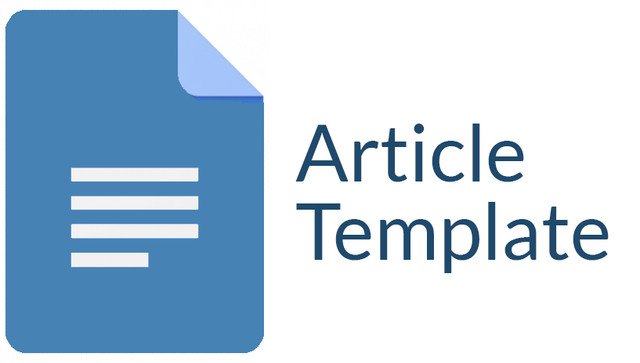Workability dan Sifat Mekanik Self Compacting Geopolimer Concrete (SCGC)
DOI:
https://doi.org/10.30736/cvl.v6i2.718Keywords:
SCGC, fly ash, compressive strength, split tensile strength, workability, air curingAbstract
The purpose of this study was to investigate the relationship between molarity and workability in Self-Compacting Geopolymer Concrete (SCGC), as well as mechanical properties. Compressive strength and split tensile strength tests are used to characterize the mechanical characteristics in this research. Additionally, the study investigates the optimal molarity for self-compacting geopolymer concrete. Fly ash was used in lieu of cement in this research. On new concrete self-compacting geopolymer, workability is determined using the EFNARC standard, which includes the Slump Flow, V-Funnel, and L-Box tests. ASTM 39/C 39M-99 standard is used to determine the compressive strength of self-compacting concrete geopolymer. On new concrete, workability is determined using the EFNARC standard, which comprises the Slump Flow Test, a V-funnel, and an L-Box. The compressive strength of concrete samples is determined according to the ASTM 39/C 39M – 99 standard. The SNI 03-2491-2002 standard is used to determine the split tensile strength of concrete. At the ages of 7, 14, and 28 days, tests were conducted. The findings indicated that new concrete at 11M-13M satisfied the criteria for SCGC workability. The compressive and split tensile strengths of SCGC grow as the concrete ages. In self-compacting geopolymer concrete, the optimal molarity is 13 M.Downloads
References
J. Davidovits, “Geopolymer International Conferences,†1999.
J. Davidovits, “Properties of Geopolymer Cements,†First Int. Conf. Alkaline Cem. Concr., pp. 131–149, 1994.
B. Hardjito, D., Wallah, S. E., Sumajouw, D. M. & Rangan, “Factors Influencing The Compressive Strength Of Fly Ash Ash-Based Geopolymer Concrete,†Civ. Eng. Dimens., vol. 6, pp. 88–93, 2004.
P. Nath and P. K. Sarker, “Fracture properties of GGBFS-blended fly ash geopolymer concrete cured in ambient temperature,†Mater. Struct., vol. 50, no. 1, pp. 1–12, 2017.
F. H, I. A, S. WE, S. E, H. D, and I. RM, “Effect of H2O/SiO2 molar ratio on direct synthesis of ZSM-5 from Bangka’s kaolin without pretreatment.,†Malaysian J. Fundam Appl. Sci. 2017;13(4), vol. 13, no. 4, pp. 817–20, 2017.
H. Xu and J. S. J. Van Deventer, “The geopolymerisation of alumino-silicate minerals,†Int. J. Miner. Process., vol. 59, no. 3, pp. 247–266, Jun. 2000, doi: 10.1016/S0301-7516(99)00074-5.
E. Bachtiar et al., “The Relationship of Temperature and Compressive Strength on Geopolymer Mortar using Fly Ash-Based,†IOP Conf. Ser. Mater. Sci. Eng., vol. 885, p. 012019, 2020, doi: 10.1088/1757-899x/885/1/012019.
J. G. . van Jaarsveld, J. S. . van Deventer, and G. . Lukey, “The effect of composition and temperature on the properties of fly ash- and kaolinite-based geopolymers,†Chem. Eng. J., vol. 89, no. 1–3, pp. 63–73, Oct. 2002, doi: 10.1016/S1385-8947(02)00025-6.
Law, A. A. Adam, T. K.Molyneaux, I. Patnaikuni, and A. Wardhono, “Long term durability properties of class F fly ash Geopolymer concrete. 48:721-731,†Mater. Struct., 2014.
EFNARC, The European Guidelines for Self-Compacting Concrete: Specification, Production and Use. UK, 2005.
ASTM C39, “Standard Test Method for Compressive Strength of Cylindrical Concrete Specimens.â€
ASTM C496, “Standard Test Method for Splitting Tensile Strength of Cylindrical Concrete Specimens.â€
Downloads
Additional Files
Published
How to Cite
Issue
Section
License
Authors who publish in this journal agree to the following terms:
-
- Copyright on any article is held by the author.
- The author grants the journal first publication rights with the work licensed concurrently under a Creative Commons Attribution License that allows others to share the work with an acknowledgment of authorship and initial publication of the work in this journal.
- Authors may make separate, additional contractual arrangements for the non-exclusive distribution of the journal's published version of that journal (for example, posting it to an institutional repository or publishing it in a book), with an acknowledgment of its initial publication in this journal.
- Authors are permitted and encouraged to post their work online (for example, in an institutional repository or on their website) before and during the submission process, as doing so can lead to productive exchange, as well as earlier and greater citation of the published work. .
- Published articles and related materials distributed under a Creative Commons Attribution-ShareAlike 4.0 International License
Civilla (Jurnal Teknik Sipil Universitas Islam Lamongan) by Universitas Islam Lamongan is licensed under a Creative Commons Attribution-ShareAlike 4.0 International License.
Based on a work at https://jurnalteknik.unisla.ac.id/index.php/CVL/index








